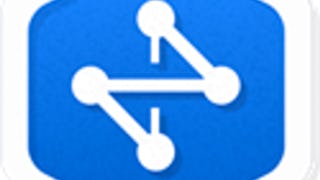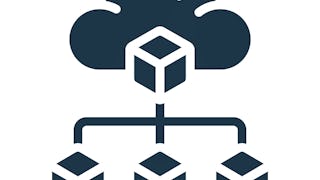Filter by
SubjectRequired
LanguageRequired
The language used throughout the course, in both instruction and assessments.
Learning ProductRequired
LevelRequired
DurationRequired
SkillsRequired
SubtitlesRequired
EducatorRequired
Explore the Server-Side Course Catalog
 Status: Free Trial
Status: Free TrialSkills you'll gain: Node.JS, Cloud Computing Architecture, Server Side, Cloud-Native Computing, React Redux, Cloud Services, NoSQL, MongoDB, React.js, Agile Methodology, Front-End Web Development, JavaScript Frameworks, Cloud Security, Cloud Technologies, Hypertext Markup Language (HTML), HTML and CSS, Restful API, Web Development, Web Development Tools, Back-End Web Development
 Status: Free Trial
Status: Free TrialSkills you'll gain: Application Performance Management, Distributed Denial-Of-Service (DDoS) Attacks, Google Cloud Platform, Cloud Infrastructure, Load Balancing, System Monitoring, Prompt Engineering, Kubernetes, Network Performance Management, Network Monitoring, Cloud Computing Architecture, Containerization, Network Architecture, Network Security, Cloud Storage, Cloud Services, Identity and Access Management, Network Routing, Virtual Private Networks (VPN), Network Troubleshooting
 Status: New
Status: NewCoursera Instructor Network
Skills you'll gain: Microsoft SQL Servers, Performance Tuning, SQL, Database Management, Stored Procedure, Database Design, Operational Databases, Database Development, Query Languages, System Monitoring, Network Troubleshooting
 Status: Free Trial
Status: Free TrialSkills you'll gain: React Native, Flutter (Software), Mobile Development, React Redux, React.js, Front-End Web Development, JavaScript Frameworks, Ajax, Cross Platform Development, Javascript, Apple iOS, UI Components, Data Structures, Back-End Web Development, Debugging, iOS Development, User Story, Full-Stack Web Development, Web Applications, Android Development
 Status: Free Trial
Status: Free TrialSkills you'll gain: Application Deployment, OpenShift, Cloud Applications, Serverless Computing, Microservices, Istio, API Gateway, Restful API, Cloud Computing, IBM Cloud, Kubernetes, Application Development, Containerization, Software Architecture, Scalability
 Status: Free Trial
Status: Free TrialUniversity of Colorado System
Skills you'll gain: Windows Servers, Authorization (Computing), Microsoft Windows, Authentications, User Accounts, Group Policy, Microsoft Servers, Security Controls, Enterprise Security, Active Directory, Identity and Access Management, Computer Security, Server Administration, System Configuration, Encryption, Network Planning And Design, Computer Networking
 Status: Free Trial
Status: Free TrialMicrosoft
Skills you'll gain: ASP.NET, Microsoft Copilot, .NET Framework, Application Programming Interface (API), Middleware, Server Side, Restful API, C# (Programming Language), Back-End Web Development, Application Frameworks, JSON, Routing Protocols, Debugging
 Status: Free Trial
Status: Free TrialGoogle Cloud
Skills you'll gain: Kubernetes, Identity and Access Management, Cloud-Native Computing, Google Cloud Platform, CI/CD, Containerization, Application Deployment, Cloud Management, Scalability, Cloud Computing, Cloud Infrastructure, Load Balancing, Continuous Integration, DevOps, Continuous Delivery, YAML, Data Storage, Cloud Security, Cloud Services, Application Performance Management
 Status: Free Trial
Status: Free TrialSkills you'll gain: Django (Web Framework), Web Development, Web Servers, Web Applications, Data Modeling, Back-End Web Development, MySQL, Application Security, Database Development, Application Frameworks, Database Management, Hypertext Markup Language (HTML)

Skills you'll gain: OSI Models, TCP/IP, Data Centers, Network Protocols, Network Infrastructure, Local Area Networks, General Networking, Network Architecture, Computer Networking, Network Switches, System Requirements
 Status: Free Trial
Status: Free TrialSkills you'll gain: Git (Version Control System), GitHub, Version Control, Continuous Integration, Software Versioning, Software Development Tools, Code Review, Software Engineering Tools, Issue Tracking, Command-Line Interface, Debugging
 Status: Free Trial
Status: Free TrialSkills you'll gain: Full-Stack Web Development, Restful API, Front-End Web Development, Web Services, Application Deployment, Web Development, Spring Framework, Amazon Web Services, HTML and CSS, Application Programming Interface (API), Server Side, Web Applications, Back-End Web Development, Spring Boot, Model View Controller, Responsive Web Design, Javascript
In summary, here are 10 of our most popular server-side courses
- Cloud Application Development Foundations: IBM
- Preparing for Google Cloud Certification: Cloud Network Engineer: Google Cloud
- Microsoft SQL Server: Performance Tuning Essentials: Coursera Instructor Network
- Developing Mobile Apps with React Native: IBM
- Application Development using Microservices and Serverless : IBM
- Windows Server Management and Security: University of Colorado System
- Back-End Development with .NET: Microsoft
- Architecting with Google Kubernetes Engine: Google Cloud
- Django Web Framework : Meta
- Introduction to Networking: NVIDIA










